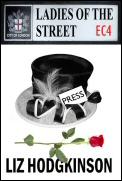Ladies of the Street

It is now more than 100 years since the first woman became editor of a national newspaper.
She lasted in the job only a few weeks… before being replaced by a man.
Since then, scores of determined and ambitious women journalists have stormed the newspaper offices of Fleet Street, gradually beating down all the barriers that tried to keep them firmly out.
Who were these extraordinary pioneering women? Their stories are all here, from the superstars such as Marje Proops, Claire Rayner, Jean Rook, Anne Robinson, Katharine Whitehorn, Jilly Cooper, Felicity Green, Nancy Banks Smith, Doreen Spooner, Sheila Black and Mary Stott, to the supporting cast who largely toiled without any recognition.
Many of these women blasted their way into jobs previously reserved exclusively for men and they dared to write about things that had never been written about before in the public prints, for a large and grateful readership.
Here is the story of Fleet Street in its bold, brash, powerful, influential – and often alcohol-soaked - heyday, and of the women who, by their courage, persistence and sheer talent, feminised and humanised national newpaper journalism.
Reviews
Leading media commentator Roy Greenslade, of The Guardian, writes about Ladies of the Street: “An entertaining historical overview, charting the gradual rise of women into positions of power and influence. Among her pen portraits, several stand out: the pioneering Sheila Black of the Financial Times, the wonderful Nancy Spain, the unstoppable Ann Leslie, the crusading Mary Stott, and three Daily Mirror staffers I came to know well, Marje Proops, Anne Robinson and Felicity Green.
It was Marje, whose Mirror advice column ran for 40 years, who wisely observed: ‘In the man’s world of newspapers… we just stand out a bit from the crowd because there are comparatively so few of us.”
The book is available from Amazon, direct from the publisher (details on the booksaboutjournalism website) and from leading bookshops.

